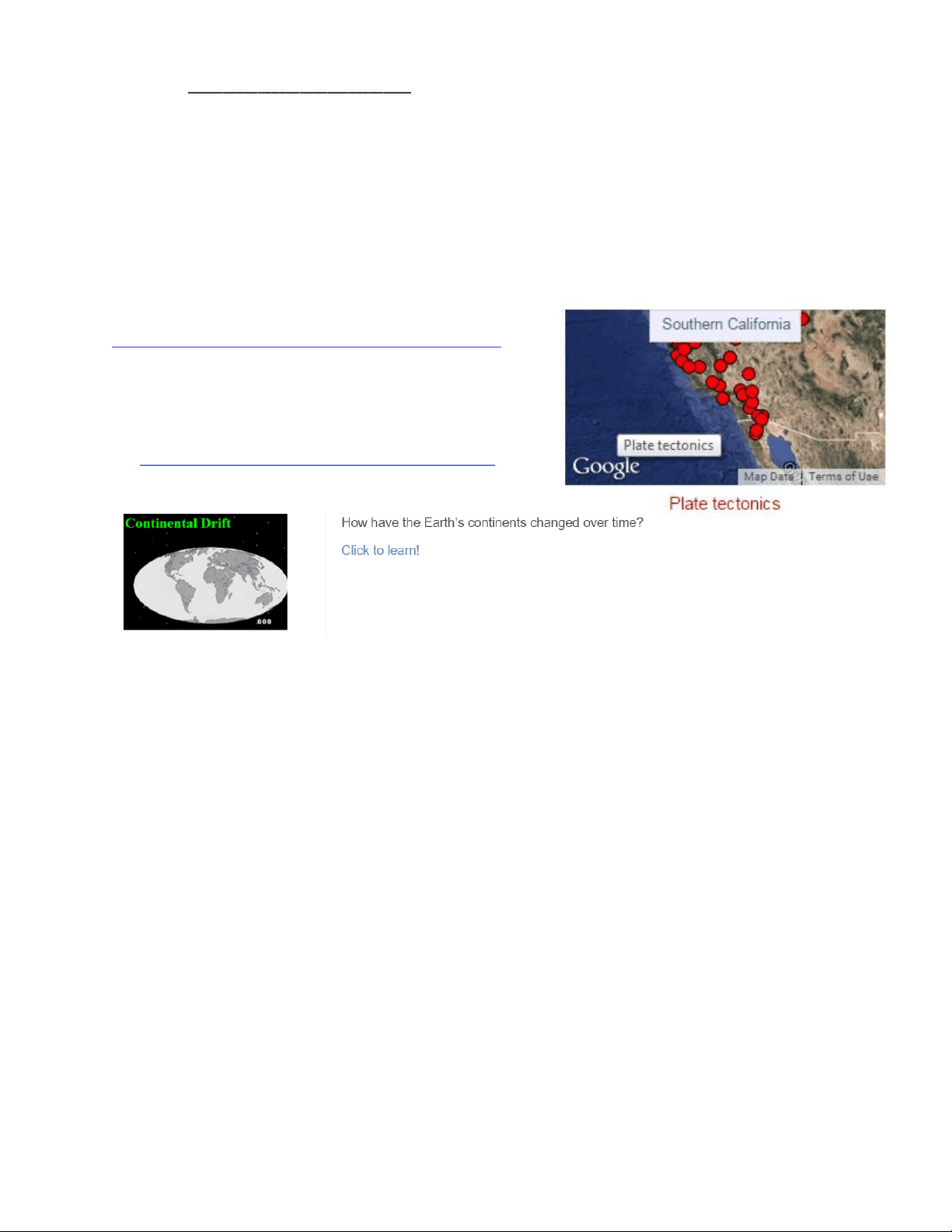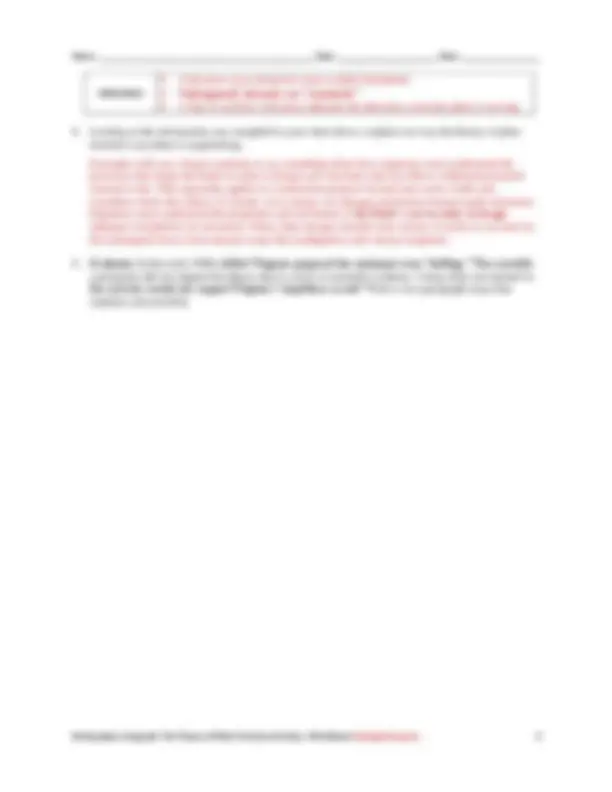



Study with the several resources on Docsity

Earn points by helping other students or get them with a premium plan


Prepare for your exams
Study with the several resources on Docsity

Earn points to download
Earn points by helping other students or get them with a premium plan
Community
Ask the community for help and clear up your study doubts
Discover the best universities in your country according to Docsity users
Free resources
Download our free guides on studying techniques, anxiety management strategies, and thesis advice from Docsity tutors
A worksheet example answer key for an activity aimed at gathering evidence to explain the theory of plate tectonics. Students are asked to explore various resources to understand continental drift, plate movements, and related phenomena such as earthquakes, volcanoes, and fossil records. The document also includes questions to guide students' analysis and reflection on the significance of plate tectonics for engineering and scientific understanding.
What you will learn
Typology: Exams
1 / 3

This page cannot be seen from the preview
Don't miss anything!


Name: ________________________________________________ Date: ______________________ Class: _________________
Objective: Gather evidence to explain the theory of plate tectonics.
Materials: Work in pairs sharing one computer with Internet access.
Engage:
Answers will vary.
Explore: Navigate to the Earthquakes Living Lab at http://www.teachengineering.org/livinglabs/earthquakes/. Notice the four main components of the Earthquakes Living Lab.
If the plates continue to move in this pattern, draw a sketch of what the world might look like 250 million years in the future. Sketches will vary. Grade sketches based on logic and completeness.
Name: ________________________________________________ Date: ______________________ Class: _________________
Plate tectonics and their drifting
Answers will vary. Students may report information such as: Seven main plates (Eurasia, North America, Africa, South America, India, Australia and Antarctica) have diverged, converged or transformed over millions of years. Some coastlines are similar in shape and appear to “fit.” Unique fossil and rock similarities across ocean basins suggests continental movement shifting and drifting away from each other. The continuation and breaking of mountain chains, coral reefs and glacial deposits, as well as the locations of earthquakes and volcanic activity suggests the same. Additional ideas suggest why the plates move—perhaps due to convection currents and the Earth’s magnetism, as seen in the resulting ocean bases, trenches and ridges.
Category Evidence Examples and Explanations
sea floor spreading
Fred Vines’ Atlantic mid-ocean ridge symmetrical magnetic stripes Age-dating sediments on either side of a ridge indicate the sediments get progressively older away from the mid-ocean ridge axis Thickness of sediments also increases away from the ridge
fossils
Fossil similarities: mesosaurus fossil, between Africa and South America Identical plant fossils found on several continents Dinosaur fossils found cross-continental Rocks of same age found across ocean basins
earthquakes
Earthquakes occur along plate margins, ocean trenches and spreading regions “Wadati-Benioff Zones” are identified as prominent earthquake zones Pervasive seismic mapping of the earthquake concentration zones worldwide